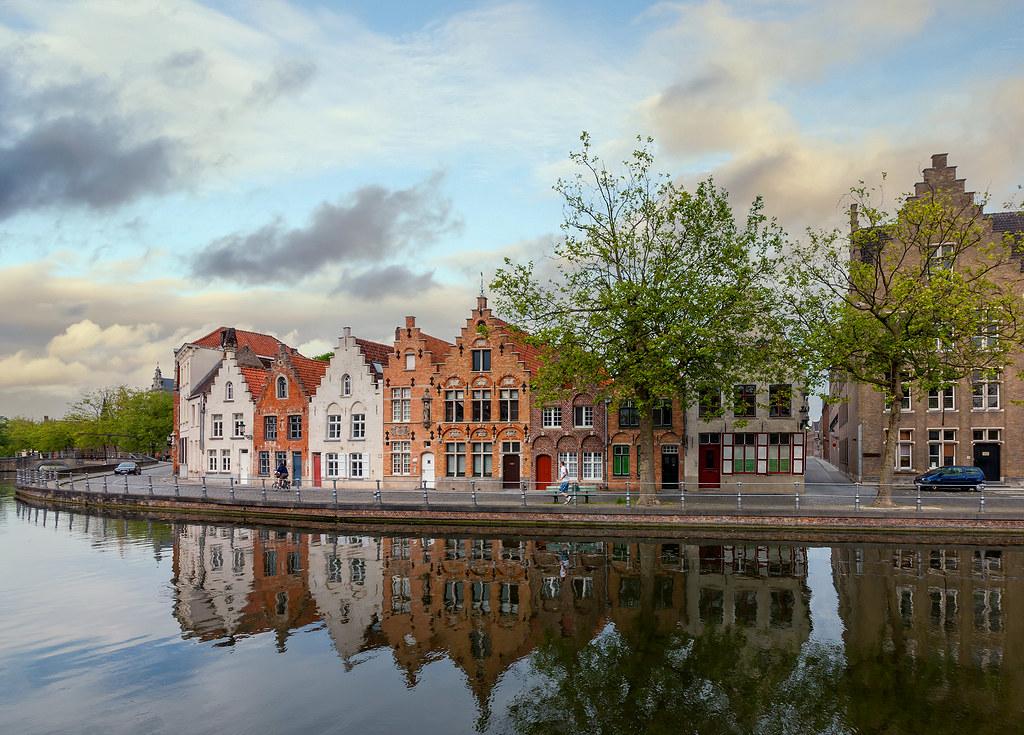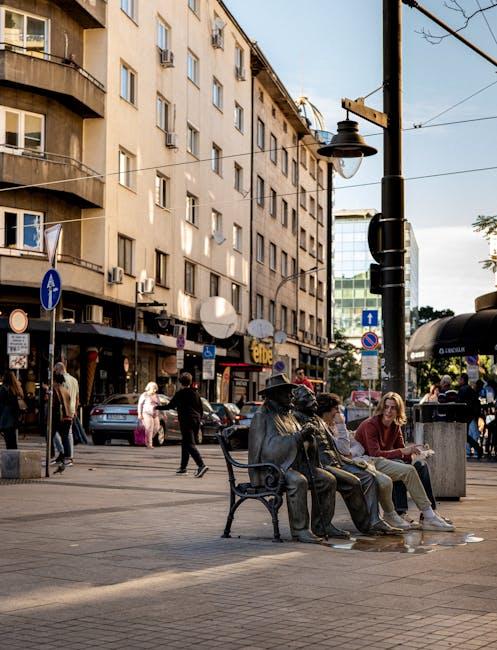In the bustling heart of cities around the globe, where skyscrapers stretch toward the heavens and streets pulse with the rhythm of modern life, a silent transformation is underway. Urban tourism, a thriving industry that lures millions to the bright lights and cultural landmarks of metropolises each year, is reshaping the very fabric of these urban landscapes. As tourists flock to experience the iconic and the exotic, local businesses find themselves at a crossroads, caught in the whirlwind of change. This article delves into the intriguing paradox of urban tourism: while it promises economic vitality and global recognition, it may also be quietly eroding the foundation of local commerce. Join us as we explore whether the surge of sightseers is a boon or a bane for the small businesses that have long been the soul of our cities.
The Hidden Impact of Tourist Influx on Neighborhood Shops
Urban tourism can transform a sleepy neighborhood into a bustling hotspot, but it often comes with unforeseen consequences for local shops. While tourists bring a surge of potential customers, their preferences can inadvertently shift the retail landscape. Local businesses, cherished for their unique offerings, might find themselves struggling to compete with the influx of tourist-oriented establishments. This shift often results in a homogenization of retail options, where chain stores and souvenir shops take precedence over traditional, family-run businesses.
- Increased Rent Prices: As areas become more popular with tourists, property values rise, leading to increased rent prices that many local shop owners can’t afford.
- Change in Product Demand: Tourists often seek souvenirs and fast, convenient options, which can lead to a decline in demand for locally sourced or crafted goods.
- Loss of Local Flavor: The character of neighborhoods can diminish as shops cater more to transient visitors rather than long-term residents.
While tourism undeniably boosts the economy, it’s crucial to strike a balance that ensures the survival and prosperity of local businesses. This requires thoughtful urban planning and community engagement to maintain the cultural and economic fabric of neighborhoods.
Balancing Tourism and Local Commerce in City Centers
Urban tourism often brings an influx of visitors eager to explore and experience the cultural richness of city centers. While this can be a boon for the economy, it can also inadvertently overshadow local commerce. The bustling streets filled with souvenir shops and international franchises might create a vibrant atmosphere, but they can also lead to the gradual decline of unique, locally-owned businesses. These businesses, often unable to compete with the allure and marketing power of global brands, may struggle to maintain their presence amidst the tourist-driven demand. Local artisans and traditional shops are often left grappling with rising rents and changing consumer preferences, which can lead to the erosion of the city’s authentic character.
However, it is possible to strike a balance between attracting tourists and supporting local commerce. Here are some strategies that cities can implement:
- Promoting local businesses through tourism guides and city maps.
- Organizing local markets and events that showcase indigenous products.
- Incentivizing local entrepreneurship with grants and subsidies.
- Implementing zoning laws to preserve traditional commercial districts.
By creating policies that foster both tourism and local commerce, cities can ensure that the economic benefits of tourism do not come at the expense of their local identity.

Strategies for Harmonizing Urban Growth and Local Business Prosperity
In order to create a synergy between urban expansion and the flourishing of local enterprises, several strategies can be effectively employed. First, prioritizing community-driven development can ensure that local voices are heard in urban planning processes. This involves engaging local business owners and residents in decision-making, fostering a sense of ownership and alignment with the broader goals of urban growth.
Additionally, implementing zoning laws that support mixed-use development can facilitate a harmonious blend of residential, commercial, and recreational spaces. This encourages foot traffic and creates a vibrant, interconnected community that benefits both local businesses and urban residents. Moreover, cities can promote local entrepreneurship by offering incentives such as tax breaks, grants, or low-interest loans specifically designed for small businesses. This can help nurture a thriving local economy while accommodating the influx of tourists.
- Encourage collaboration between local businesses and tourism agencies.
- Invest in infrastructure that supports both tourism and local commerce.
- Facilitate workshops and training programs for local business owners.

Innovative Approaches to Support Local Enterprises Amid Tourism Booms
To foster a harmonious coexistence between urban tourism and local enterprises, cities can adopt several innovative strategies. One promising approach is to create a supportive ecosystem that encourages collaboration between local businesses and tourism stakeholders. This can include forming partnerships with travel agencies to promote local products and experiences, as well as organizing events that highlight the unique offerings of the community.
- Local Marketplaces: Establishing dedicated spaces where tourists can discover and purchase local goods, such as artisan crafts and regional delicacies.
- Experience-Based Tourism: Developing immersive tours and workshops that allow visitors to engage directly with local culture and industries, thus supporting small businesses.
- Digital Promotion: Utilizing online platforms to amplify the presence of local enterprises, making them more accessible to tourists seeking authentic experiences.
Moreover, leveraging technology can provide local businesses with a competitive edge. This might involve creating mobile apps that guide tourists to lesser-known local gems, or implementing digital loyalty programs that reward tourists for supporting local enterprises. By embracing these approaches, cities can ensure that the influx of tourists serves as a catalyst for local economic growth rather than a hindrance.
Closing Remarks
As we navigate the intricate tapestry of urban tourism and its impact on local businesses, it becomes clear that this is not a tale of black and white. Instead, it’s a nuanced narrative where the vibrancy of city life meets the challenges of preserving its authentic heartbeat. Urban tourism, with its promise of economic prosperity, walks a tightrope, balancing the allure of global visitors with the needs of local entrepreneurs striving to maintain their foothold.
The decline of local businesses isn’t a foregone conclusion, nor is it an unavoidable casualty of urban tourism. It is a call to action, an invitation for cities to innovate and for communities to rally together. It is a chance for policymakers to craft strategies that celebrate the unique flavors of their cities, fostering an environment where both tourists and local businesses can thrive symbiotically.
As we close this chapter, let us carry forward the understanding that sustainable urban tourism is not just about numbers, but about nurturing the soul of the city itself. It is a journey of adaptation and resilience, where every stakeholder has a role to play in writing the next page of this evolving story. The city awaits, vibrant and full of potential, ready to embrace a future where the echoes of its past and the promise of tomorrow walk hand in hand.

































